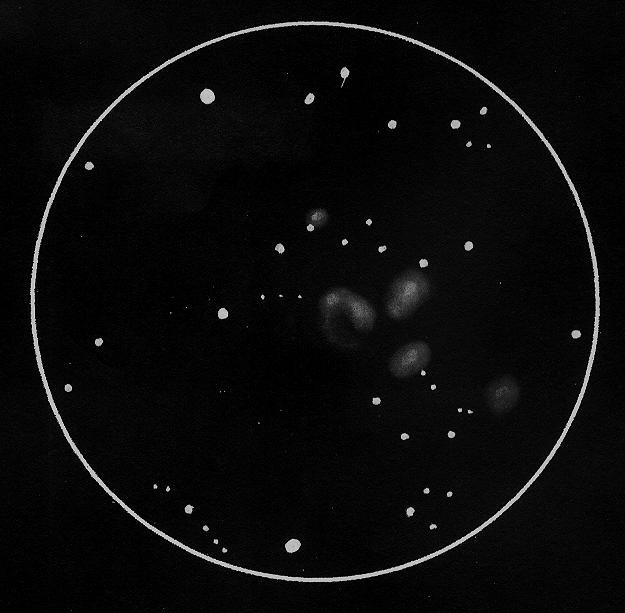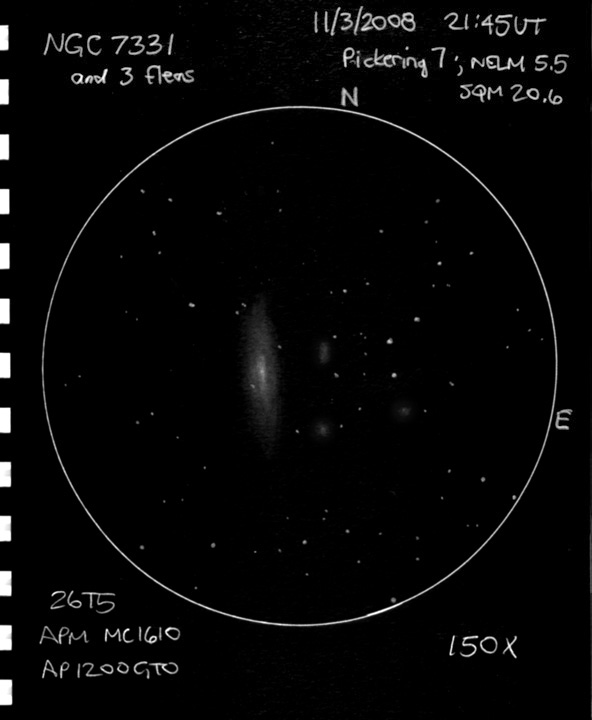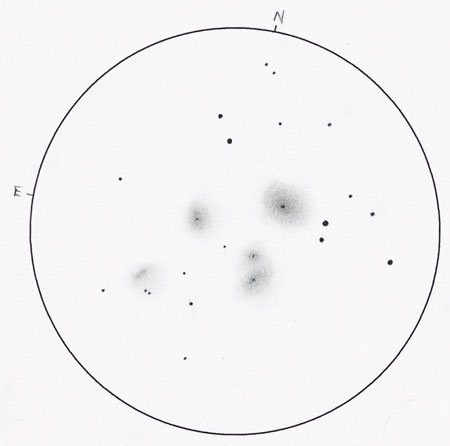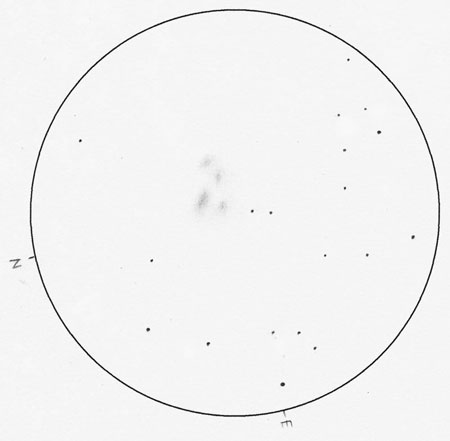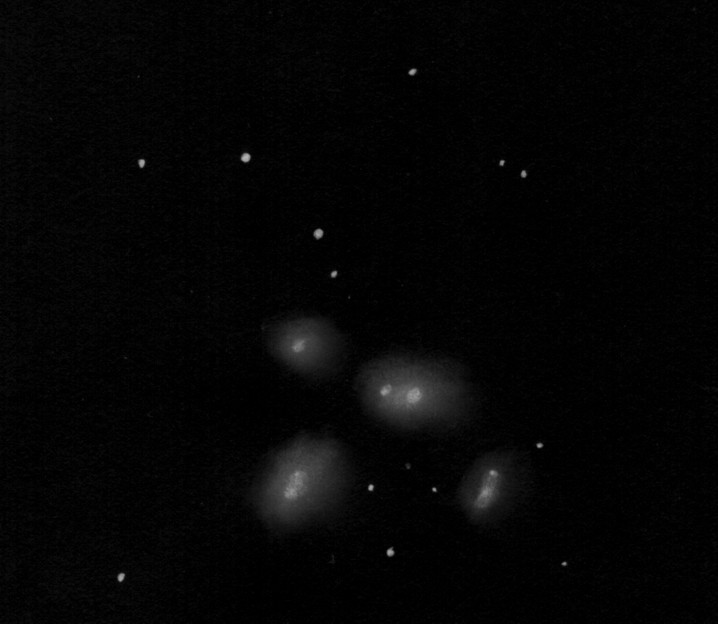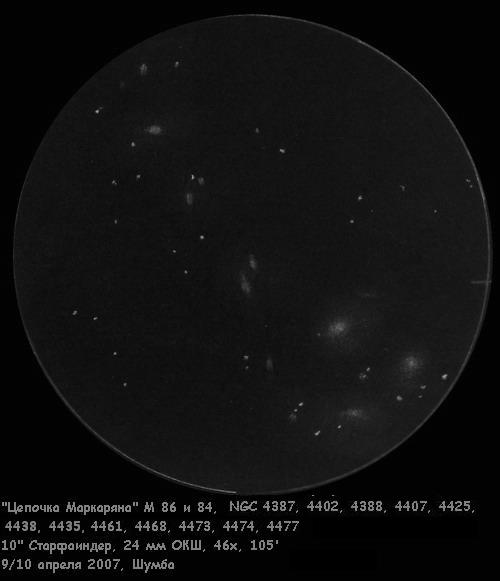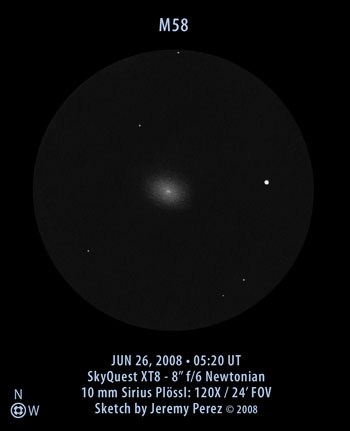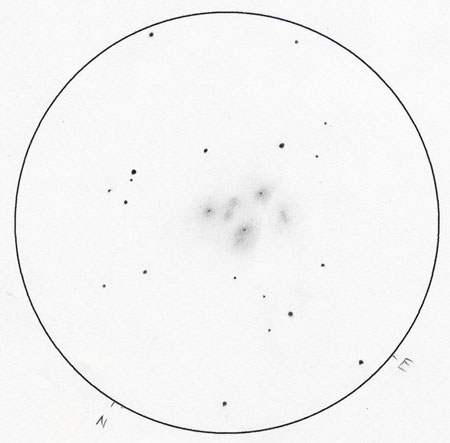
The Leo Three
Sketch by Janis Romer, Details by Frank McCabe
Janis has rendered here an impressive sketch of the “Leo triplet” of galaxies in the constellation of the same name. The northern most member closest to the bottom of the drawing is NGC 3628. At approximately magnitude 9.9 visually, it was missed by Charles Messier but recorded by William Herschel in the spring of 1784. At 35 million light years distant it has an apparent diameter of 15 arc minutes. In an 18 inch telescope from good skies the dust lane bisecting this galaxy is clearly visible. The outer visible parts of this galaxy are distorted by gravitational interactions with the other two members of this group, namely M-65 and M-66. These two galaxies were discovered and recorded by Charles Messier in March of 1780 (incorrectly attributed to Pierre Mechain until recently corrected). M-65 the fainter of these two at magnitude 9.3 and western most (top left) in this sketch, is a tightly wound spiral with an apparent size of 8’ by 2’. M-66 the eastern most (top right) galaxy in the sketch is dusty looking and brighter at magnitude 8.9. This less symmetrical spiral measures 8’ by 3’ in apparent dimensions. Values for the distances of these last two galaxies vary from 22 million light years to 35 million. Measurements taken using Cepheid variables as standard measuring candles find the distance to these galaxies at about 35 million light years (11 mega parsec).
This sketch was made using a Criterion 8” f / 8 Newtonian reflector telescope


